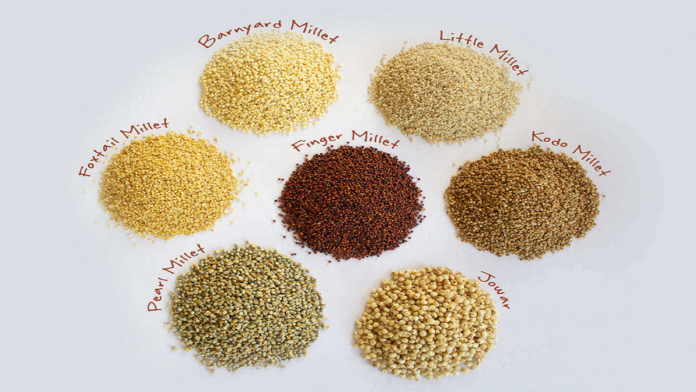The International Year of Millets: how India’s govt can promote the cereals in 2023
2023: International year of Millets
The United Nations has declared year 2023 as the International year of Millets. Since India accounts fifth of the world’s Millet production, Indian government under supervision of Prime minister Narendra Modi, would be expected to do something different this year to promote the high-nutritional cereals.
India has recognized the importance of this high-nutritional crop. Also, India has created a domestic and global demand along with providing nutritious food to the community.
What are millets?
Millet is a common term for categorising small-seeded grasses that are often called Nutri-cereals. Some of them are sorghum (jowar), pearl millet (bajra), finger millet (ragi), little millet (kutki), foxtail millet (kakun), proso millet (cheena), barnyard millet (sawa), and kodo millet (kodon).
Millets are considered as an essential staple cereal crop for millions of smallholder dryland farmers across Sub-Saharan Africa and Asia. Millets offer nutrition, resilience, income and livelihood for farmers. Further, they have multiple uses such as food, feed, fodder, biofuels and brewing.
Significance and benefits:
Millets are nutritionally superior to wheat and rice. As, they contain higher protein levels and a more balanced amino acid profile. They also contain various phytochemicals which endeavour remedial properties owing to their anti-inflammatory and anti-oxidative properties.
Further, being climate flexible, these grains are rich sources of nutrients like carbohydrates, protein, dietary fiber, and good-quality fat. Furthermore, they are rich source of minerals like calcium, potassium, magnesium, iron, manganese, zinc and B complex vitamins.
Most importantly, this crop production is not dependent on the use of chemical fertilizers.
Millets in India: Background
The highly rich cereals were traditionally consumed, but due to the push given to food security through Green Revolution in the 1960s, they were less consumed and almost forgotten.
Before the Green Revolution, millets made up around 40 per cent of all cultivated grains, which has dropped to around 20 per cent over the years.
India produces more than 170 lakh tonnes of millet, which is 80 per cent of Asia’s and 20 per cent of global production.
India produces all the nine commonly known millets and is the largest producer and fifth-largest exporter of this crop in the world. Most of the states in India grow one or more millet crop species. Rajasthan, Uttar Pradesh, Haryana, Gujarat, Madhya Pradesh, Maharashtra, Karnataka, Tamil Nadu, Andhra Pradesh, and Telangana are the major millets producing states.
Trade in India
In 2020- 21, India exported millets worth USD 26.97 million against USD 28.5 million in 2019-20. India exported cereals products worth of USD 34.32 million during 2021-22.
India’s major millet exporting countries are UAE, Nepal, Saudi Arabia, Libya, Oman, Egypt, Tunisia, Yemen, the UK and the US.
The major millet-importing countries in the world are Indonesia, Belgium, Japan, Germany, Mexico, Italy, the US, the UK, Brazil, and the Netherlands.
For more updates and news, subscribe to our newsletter at Contact Us


